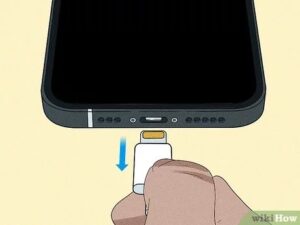When it comes to staying connected on the go, a portable charger is a must-have accessory. But with so many options out there, it can be overwhelming to figure out what to look for in a portable charger. Don’t worry, we’ve got you covered. In this article, we will break down the key factors to consider when shopping for a portable charger, ensuring that you make a smart and informed choice. So, if you’re ready to find the perfect portable charger to keep your devices juiced up, let’s dive in!
What to Look for in a Portable Charger
Introduction
In this fast-paced digital era, staying connected is crucial. Whether you’re traveling, hiking, camping, or simply on the go, having a reliable power source for your electronic devices is essential. Portable chargers, also known as power banks, have become increasingly popular due to their convenience and ability to charge devices on the move. However, not all portable chargers are created equal. In this article, we’ll explore the key factors to consider when choosing a portable charger that suits your needs and ensures uninterrupted power for your smartphones, tablets, and other gadgets.
Capacity
The capacity of a portable charger is one of the most important aspects to consider. It determines how much power the charger can store and subsequently deliver to your devices. Portable charger capacity is measured in milliampere-hours (mAh). To ensure you have enough power to keep your devices charged, consider the following:
- Device-specific Requirements: Check the battery capacity of your smartphone or tablet. Higher capacity devices such as tablets generally require a portable charger with a larger capacity.
- Multiple Device Charging: If you frequently charge multiple devices simultaneously, opt for a power bank with a higher capacity to accommodate the power requirements of each device.
- Estimated Charging Needs: Consider how often you’ll be away from a power source. If you’re frequently on the go and unable to recharge your portable charger, it’s advisable to select one with a larger capacity.
Output Power and Charging Speed
The output power of a portable charger determines how quickly it can charge your devices. The charging speed depends on two factors: the output current (measured in amperes or A) and the voltage (measured in volts or V). Here’s what to consider:
- Output Current: Look for a portable charger that offers a higher output current, typically ranging from 1A to 2.4A, as it will charge your devices faster. Note that some chargers have multiple output ports, allowing you to charge multiple devices simultaneously, but the total output current is usually distributed among the ports.
- Quick Charging Technology: Some portable chargers support fast charging technologies like Qualcomm Quick Charge or Power Delivery, which can significantly speed up the charging process for compatible devices. If you have devices that support these technologies, investing in a compatible charger can be advantageous.
- Smart Charging: Look for chargers that feature smart charging technology, which automatically detects the connected device’s power requirements and delivers the optimal charging current. This helps protect your devices from overcharging or overheating.
Portability and Size
One of the main advantages of a portable charger is its ability to provide power on the go. Consider the following factors when evaluating the portability and size of a power bank:
- Physical Dimensions and Weight: Look for compact and lightweight models that easily fit in your pocket, bag, or purse, without adding unnecessary weight or occupying too much space.
- Capacity-to-Size Ratio: Evaluate how efficient the portable charger is in terms of providing a higher capacity while maintaining a compact size. Manufacturers are constantly improving technology to offer higher capacities in smaller form factors.
- Ease of Transportation: Consider additional features like a built-in carrying case, lanyard, or clip that can enhance the portability of the charger and keep it securely attached to your backpack or belt loop.
Input and Recharging Time
While portable chargers are a convenient source of power, they also require recharging. Understanding the input power and recharging time is crucial to ensure you’re not left without power for an extended period. Consider the following:
- Input Current: Look for a charger with a higher input current, typically ranging from 1A to 2.4A, as it will recharge the power bank faster.
- Charging Technology: Some chargers feature fast recharging technologies, like Quick Charge or Power Delivery, which can significantly reduce recharging time. Consider investing in a charger with these capabilities if you’re frequently in situations where a quick recharge is essential.
- Charger Compatibility: Ensure that the charger’s input voltage range is compatible with the power sources you have available, such as wall outlets, car chargers, or solar panels.
Additional Features
While capacity, charging speed, and portability are the main considerations, the following additional features can enhance the overall user experience:
- LED Indicators: LED lights that indicate the remaining battery or charging status are incredibly helpful to determine when to recharge the power bank or how much power is left.
- Built-in Cables: Some portable chargers come with integrated charging cables, eliminating the need to carry extra cables. Consider whether you need built-in cables for convenience or prefer a charger that allows you to use your own cables.
- Multiple Charging Ports: If you frequently charge multiple devices simultaneously, look for a portable charger with multiple output ports to accommodate your needs.
- Pass-Through Charging: This feature allows you to charge your devices while simultaneously recharging the power bank, eliminating the need for multiple power sources.
- Safety Features: Consider chargers with built-in protection mechanisms like overcharging, short-circuiting, and temperature control to ensure the safety of your devices.
Choosing the right portable charger can make a significant difference in staying connected when you’re on the move. By considering factors such as capacity, output power and charging speed, portability, input and recharging time, and additional features, you can find a charger that meets your specific needs. Remember to assess your personal charging requirements and prioritize the features most important to you. With the right portable charger by your side, you’ll never have to worry about running out of battery power again.
Note: The information provided in this article is for general informational purposes only. Always refer to the manufacturer’s specifications and guidelines before making a purchase.
What Battery Bank Should You Buy?
Frequently Asked Questions
What are the key factors to consider when looking for a portable charger?
When searching for a portable charger, it’s important to pay attention to several key factors to ensure you choose the right one for your needs:
What is the ideal capacity for a portable charger?
The ideal capacity of a portable charger depends on your usage requirements. If you typically charge small devices such as smartphones, a capacity between 5,000mAh and 10,000mAh should suffice. For larger devices like tablets or multiple devices, consider a charger with a capacity of 10,000mAh or higher.
What charging speed should I look for in a portable charger?
When it comes to charging speed, look for a portable charger that supports fast charging technologies such as Quick Charge or Power Delivery. These technologies can significantly reduce the charging time of your devices compared to regular chargers.
Are there any additional features or functionalities to consider?
Yes, there are several additional features and functionalities you may want to consider. Some portable chargers come with multiple output ports, allowing you to charge multiple devices simultaneously. Others may have built-in LED indicators to display the remaining battery level. It’s also worth checking if the charger supports pass-through charging, which allows you to charge the portable charger itself while simultaneously charging your devices.
How important is the size and weight of a portable charger?
The size and weight of a portable charger can greatly affect its portability. If you intend to carry it with you frequently, opt for a compact and lightweight model that easily fits in your bag or pocket. However, keep in mind that smaller chargers may have lower capacity, so strike a balance between size, weight, and capacity based on your specific needs.
What safety features should I look for in a portable charger?
When choosing a portable charger, prioritize safety features such as overcharging protection, short circuit protection, and temperature control. These features help prevent damage to your devices and ensure safe and reliable charging.
Final Thoughts
When considering a portable charger, there are several factors to keep in mind. Firstly, the charging capacity is crucial, as it determines the number of times your device can be charged. Look for a charger with a high mAh rating to ensure sufficient power. Secondly, consider the number and type of ports available. Multiple ports and different port types will offer versatility for charging various devices simultaneously. Additionally, the size and weight of the charger are important for portability. A compact and lightweight option makes it convenient to carry. Lastly, prioritize safety features such as surge protection and heat resistance. By keeping these factors in mind, you can find the ideal portable charger to meet your needs. So, when searching for a portable charger, remember to thoroughly consider its charging capacity, port availability, size and weight, and safety features.



